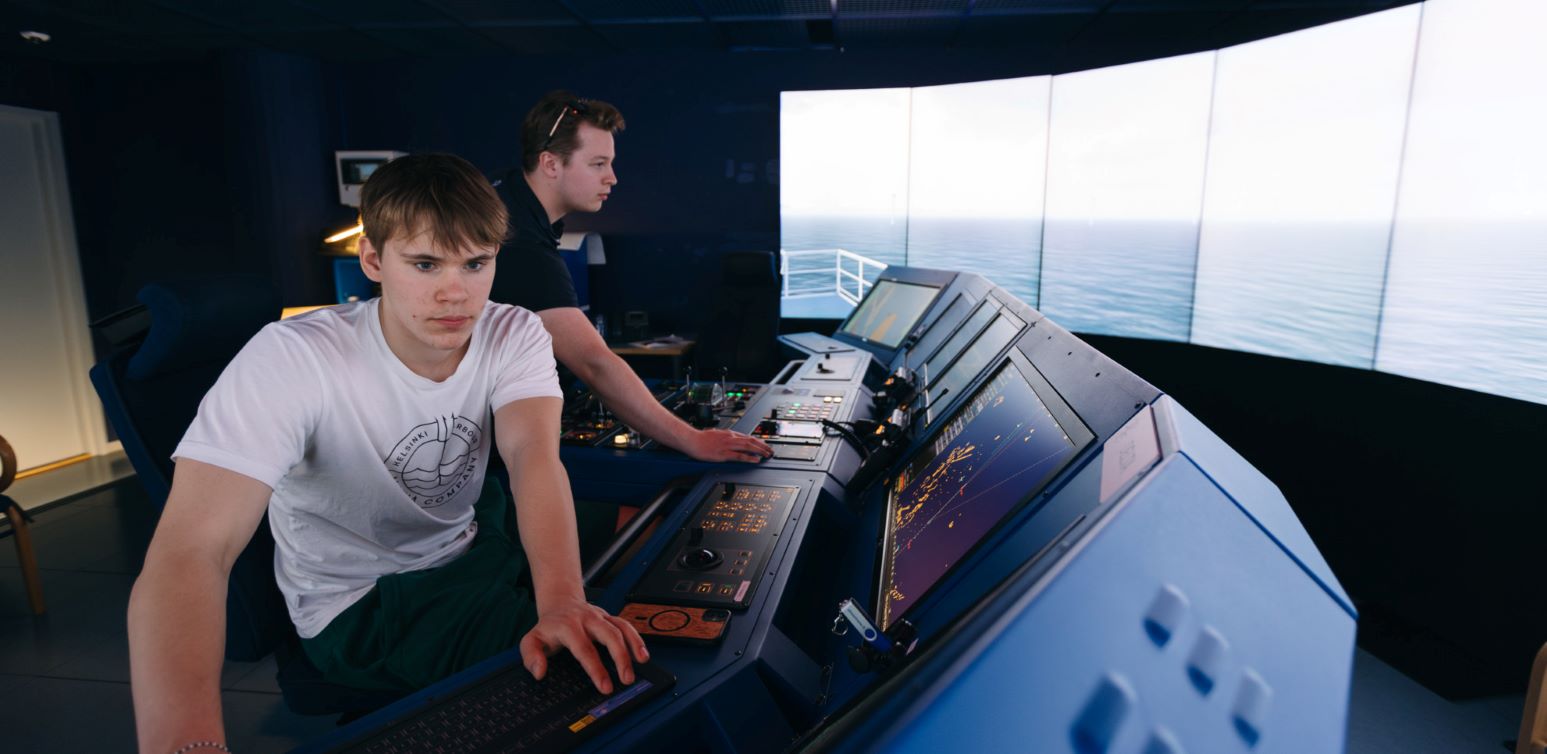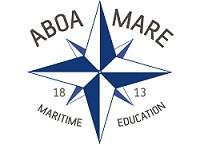
A 160 metres long container ship is sailing past Copenhagen. Visibility varies, there is not much wind, but sea currents are moderate. The fairway is narrow, so the crew has to keep a sharp eye.
Actually, this time, we are not really sailing through the Sound, but are in one of Aboa Mare’s ship bridge simulators. A watch exercise for watch keeping officer students is in progress.
On the screens we can see the fairway, and the bridge provides all of the equipment and gear that can also be found in the real environment such as electronic nautical charts, two radar displays, information displays, controls for propulsion bow thrusters, and autopilot.
“This feels just like a real situation. For example, anticipation is important because, as we know, a large ocean liner will not turn in an instant”, student Rasmus Gustafsson contemplates.
Aboa Mare’s maritime academies in Turku train maritime professionals and the Axxell secondary school and Novia University of Applied Sciences have approximately 500 students in total. In addition, Aboa Mare provides short courses to other seafaring professionals.
Rare situations can also be practised
Simulator Manager Bo Lindroossays that the simulators can be used to steer vessels, such as the Viking Grace, on different fairways and to different ports in various weather conditions.
“One of the big advantages of simulators is that they can be easily used for practising actions in various unexpected fault situations or when another ship comes too close. In real environment this cannot often be done, fortunately.”
For example, the three-year watch keeping officer degree requires 360 days of guided practical training, 30 of which can be completed in the simulator.
“The simulator is not an exact match with the real world. But it’s quite close.”
With the power of a hundred virtual ships
Aboa Mare has ten ship bridge simulators and an engine room simulator, all of which can be monitored by the teacher in a single control room. The system provides excellent readiness nationally and internationally.
“The simulators include around 100 different ships, all piloted fairways in Finland, and selected ports from around the world, such as Rotterdam, San Francisco, Bilbao, and Singapore. The simulators are continuously being developed according to the emerging needs. We work in close co-operation with shipping companies.”
Simulators are also utilised, for example, in the planning of ports and fairways, as they can be used to test what it is like to sail on different routes. The Port of Turku also uses simulators in the planning of berths.
“On short courses for seafaring professionals, it is possible to practise manoeuvring a ship in Arctic waters or steering an LNG tanker.”
All is well in the Sound
Let’s go back to the virtual Sound. All is well on the bridge. The watch keeping officer students steer the ship in an assured fashion.
“It’s easy for the PlayStation generation to assume command of the simulator use”, Mr Lindroos points out.
“The simulator provides a good basis for steering a real ship. But in a real situation, with real steel around you, the pressure will surely be greater”, says Mr Gustafsson, who is studying to be a watch keeping officer.

